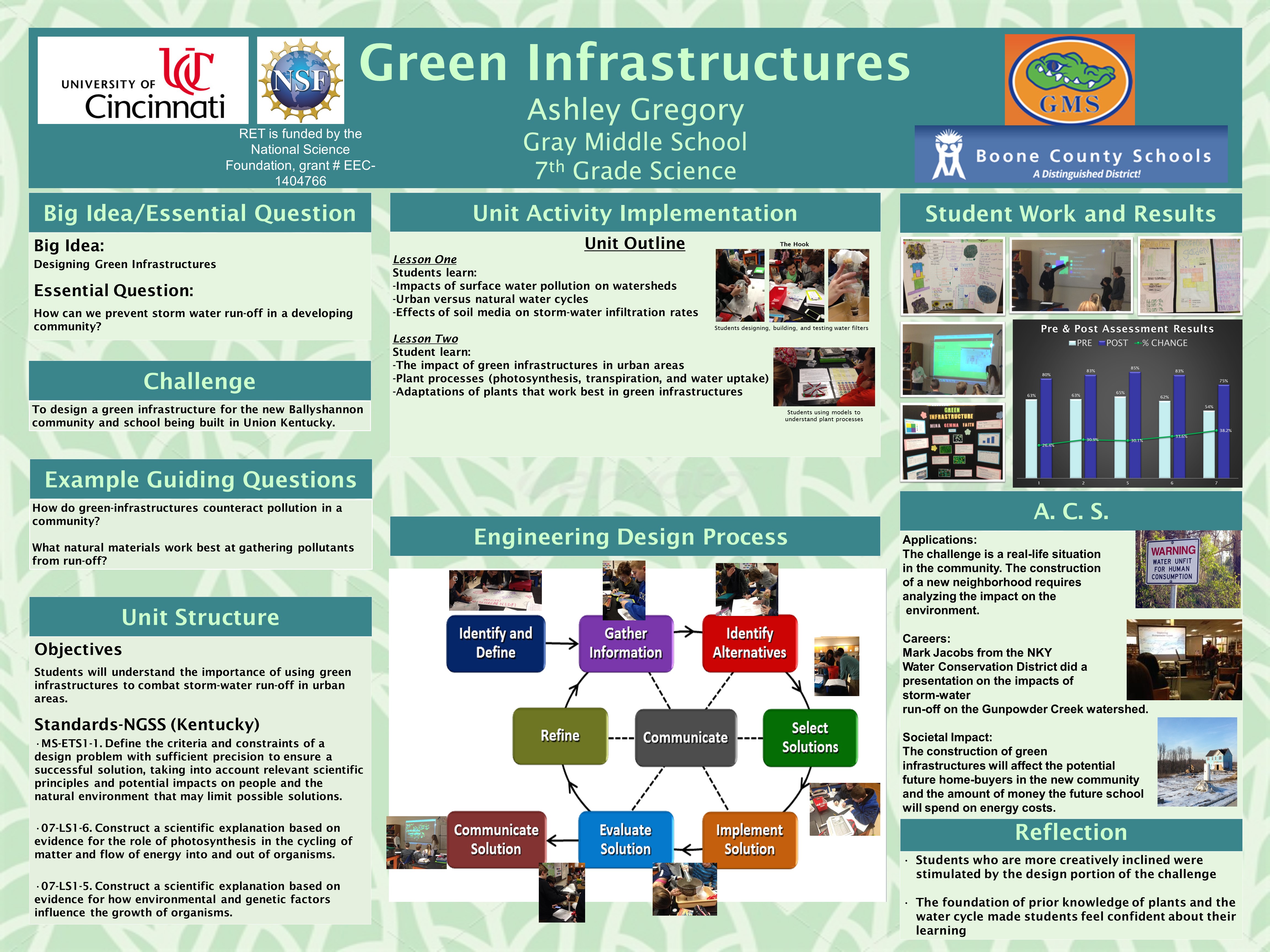Research Experience for Teachers (2015-2016)
Green Infrastructures
 |
||||||
|
||||||
|
Pre/Post Test: Pre-Test |
||||||
|
The Big Idea (including global relevance) Using Green Infrastructures |
|
Essential Questions How can green infrastructures filter storm-water pollutants? |
|
The Hook
Using the given materials (cotton balls, filter paper, etc) students will build a filtration system for soiled water. Groups of students will then test their filtration systems and have a discussion about utilizing rain water as a clean water source. |
|
The Challenge Create a green-infrastructure to reduce storm-water run-off contaminants produced from the new community (middle school) |
|
Guiding Questions
|
ACS (Real world applications; career connections; societal impact)
The construction of the green infrastructures will affect the potential future home-buyers for the new community and the amount of money the future school will spend on energy efficiency.
The construction of the green infrastructures will affect the potential future home-buyers for the new community and the amount of money the future school will spend on energy efficiency.
I am attempting to get a guest speaker in to discuss with the students the construction of the new middle school (example: the school district’s architect). Perhaps the students could also go on a field trip to the Cincinnati Zoo since they house many different examples of green infrastructures. Careers that I will introduce are environmental engineering, architecture, and civil engineering.
Misconceptions
- All plants go through the process of transpiration at the same rate. This misconception was addressed during the online virtual lab in lesson two, activity one. Students now understand that plants do not transpire at the same rate due to their own individual adaptations and living conditions.
- Storm water run-off goes straight from a storm-water drain to a water treatment center. Students are unaware that most storm water goes straight back into the local watershed/river/stream. This was addressed in lesson one, activity one.
- Most freshwater is used in the urban city. Students learned that most freshwater is used in the agriculture industry. This was addressed in lesson one, activity one.
Unit Lessons and Activities
- Lesson 1: During lesson one students will learn about surface water pollution, urban vs natural water cycles, and the effects of soil media on water pollution. The over-arching idea for this lesson is about run-off pollution contaminants and how they leach into surface water and ground water systems.
- Activity 1: The Hook-Build a filtration process to clean water using common household products. Students will build and then test.
- Activity 2: Introduce the “Big Idea”-Have students begin brainstorming essential questions about storm-water pollution.
- Lesson 2: During lesson two students will learn about how plants can be used to counteract run-off pollution through transpiration and water absorption. Students will also learn what types of plants work best in green infrastructures.
- Activity 3: Activity on Transpiration Rates of Native Plants
- Activity 4: Design a green infrastructure which will reduce storm water run-off in the Ballyshannon Way community.
- Evidence of CBL: Lesson 1, Activity 1; Lesson 1, Activity 2
- Evidence of EDP: Lesson 2, Activity 2
Additional Resources
